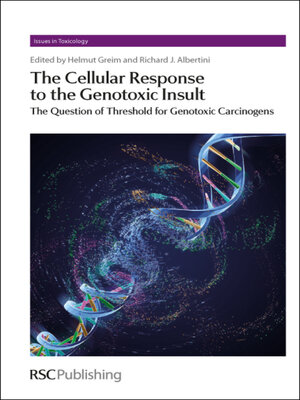Cellular Response to the Genotoxic Insult
ebook ∣ The Question of Threshold for Genotoxic Carcinogens · Issues in Toxicology
By Helmut Greim

Sign up to save your library
With an OverDrive account, you can save your favorite libraries for at-a-glance information about availability. Find out more about OverDrive accounts.
Find this title in Libby, the library reading app by OverDrive.



Search for a digital library with this title
Title found at these libraries:
| Library Name | Distance |
|---|---|
| Loading... |
Genotoxic carcinogens can lead to DNA mutations with the potential to cause cancer. Typically, a series of mutation events are needed before malignancy occurs so a single, small exposure may not result in disease. Also, cells have an armoury of defence mechanisms which, to a degree, counter the effects of mutagens. Distinguishing the point at which exposure to a carcinogen increases mutation rates beyond the background level is challenging. In fact, there is now general agreement that, for genotoxic carcinogens, no specific threshold can be identified. However, NOAELs (No Observed Adverse Effect Levels) may be used in the process of establishing a dose-response relationship. These denote the level of exposure at which there is no significant increase in adverse effects in the exposed population when compared to an appropriate control. Such a scientifically defendable threshold allows us to propose health based exposure limits for genotoxic carcinogens. This book describes the various cellular defence mechanisms individually and explains how they are regulated. The processes covered include metabolic inactivation, epigenetic regulation, scavenging mechanisms, DNA-repair and apoptosis. It also considers dose-dependent threshold mechanisms of carcinogenesis and the rate limiting parameters. Aimed at graduate level and above, the book discusses the consequences of genotoxic evaluation and urges readers to question the idea that even low exposures present a cancer risk.







